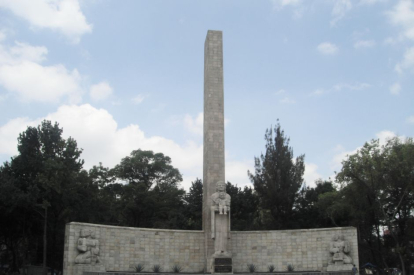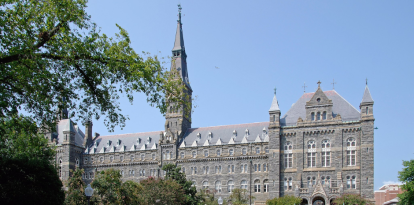The origin of Mother's Day
The religious celebration does not have an official date; each country decides to celebrate it on different days according to its own history.

(Cordon Press).
Today in the United States is Mother's Day. In the nation, traditionally, this holiday is celebrated on the second Sunday of May, but this is not the case in the rest of the world. In Mexico, for example, this date takes place on May 10, while in Spain the holiday is usually celebrated on the first Sunday of May.
But where does this celebration come from and why are mothers honored on different days of the year? It all has to do with the month in which it is celebrated: May. Religiously, these 31 days are dedicated to the Virgin Mary, the mother of Jesus, and for this reason, all countries agree that May is the time to honor mothers.
However, this was not the case in the past. Remember National Geographicthat in Ancient Greece, for example, the goddess Rhea was commemorated at the beginning of spring. She was not only the goddess of fertility and motherhood. She was also named the mother of humanity. A title assigned to her as the progenitor of Hestia, Hades, Demeter, Poseidon, Hera and Zeus. Meanwhile, Rome worshipped Cybele, the goddess of the earth, and in Egypt Isis, known as the great mother goddess, was honored.
That was until Christians decided to give an official date to this holiday: December 8. That was the day on which the Christian religion decided that mothers should be commemorated, since that was the date on which the Day of the Immaculate Conception was celebrated. And so it remained until the middle of the 20th century. At that time, several countries decided to change the day on which, until then, this holiday was celebrated:
Mexico, Guatemala and El Salvador: May 10
Mexico had it clear from the beginning: Mother's Day in the country would be celebrated on May 10 from then on. So much so that the founder of the newspaper Excelsior, Rafael Alducin, published on April 13, 1922 on the front page the following sentence: "Mother's Day will be celebrated this year in almost the entire republic". With the phrase came an invitation to other associations, the media and even state institutions to join the initiative. And it worked. Since then, Mother's Day has been celebrated on May 10 in Mexico, as well as in Guatemala and El Salvador.
So much so that on May 10, but in 1944, the then Mexican President Manuel Avila Camacho decided that this would be the date on which he would lay the first stone of what he called the Monument to the Mother. This sculpture, located in Mexico City, depicts a woman with her child in her arms and includes the following two plaques: "To the one who loved us before we met" and "Because her motherhood was voluntary".

Monument to the Mother that Mexican President Manuel Avila Camacho began to erect in 1944.
Spain: first Sunday in May
In Spain, Mother's Day has undergone several changes. It is perhaps the country that has dedicated the most dates to honor mothers. First, as in the rest of the world, it was decided to honor the progenitors on the Day of the Immaculate Conception, but in 1925, changes began to take place.
On that date Julio Menéndez García, a postal official, wrote a poem "Hymn of the mother". In it, he stated that an exclusive day was needed to "exalt the love for the Mother". The initiative went from being something popular to being covered by all the newspapers in Spain: the Week of Kindness was thus created.
It would be celebrated the first week of October 1926 and would include a special day for children to give bouquets of flowers to their mothers. It became the first official Mother's Day in Spain.
The fad took root and, the following year, an article in the Nuevo Mundo newspaper suggested that this commemoration be given an official date and that, to do so, they join the day assigned by the United States, since many countries were joining that date.
But Francisco Franco decided that Mother's Day should return to its Christian date and declared that the holiday would henceforth be celebrated on December 8. However, several shopping malls objected and continued to hold it in May. Until 1965. That was the date on which it was decided that Mother's Day would again be commemorated during May and, specifically, on the first Sunday of the month.
United States, Colombia and Venezuela: second Sunday in May
Seven days after Spain, mothers are also commemorated in the United States. And the date is no coincidence either, although, in their case, they made the decision in 1865 just after the end of the Civil War. That year, activist Ann Maria Reeves decided to organize a gathering of mothers, called Mothers' Day Gatherings. Her intention was that the parents would have a place to talk, to share their opinions and experiences together.
These meetings were attended by Julia Ward Howe, a writer and later activist who, five years later, in 1870, wrote a poem entitled
Proclaims Mother's Day
. In her writing she asserts that the women of the world must unite and protest, in a peaceful manner, the tragedies they have had to endure during the war, as well as to show their support and solidarity with the victims of the Franco-Prussian War.
The festivity was lost for almost a century but, in 1907, it resurfaces again and it does it with force. That year, the mother of a member of the Meetings died and the feminist movement asked the government to make May 12 - the second Sunday of the month that year - a day dedicated to honoring the mothers of the world.
Seven years later, Mother's Day was made official by President Woodrow Wilson and, to this day, the nation's tradition of commemorating our mothers every second Sunday in May continues. A tribute to which countries such as Colombia and Venezuela also joined in.

























